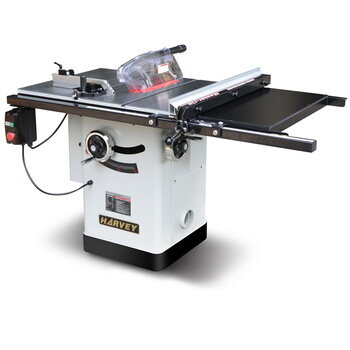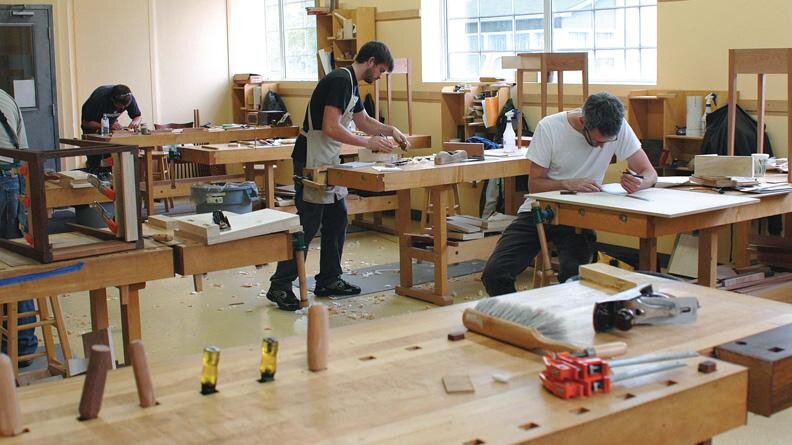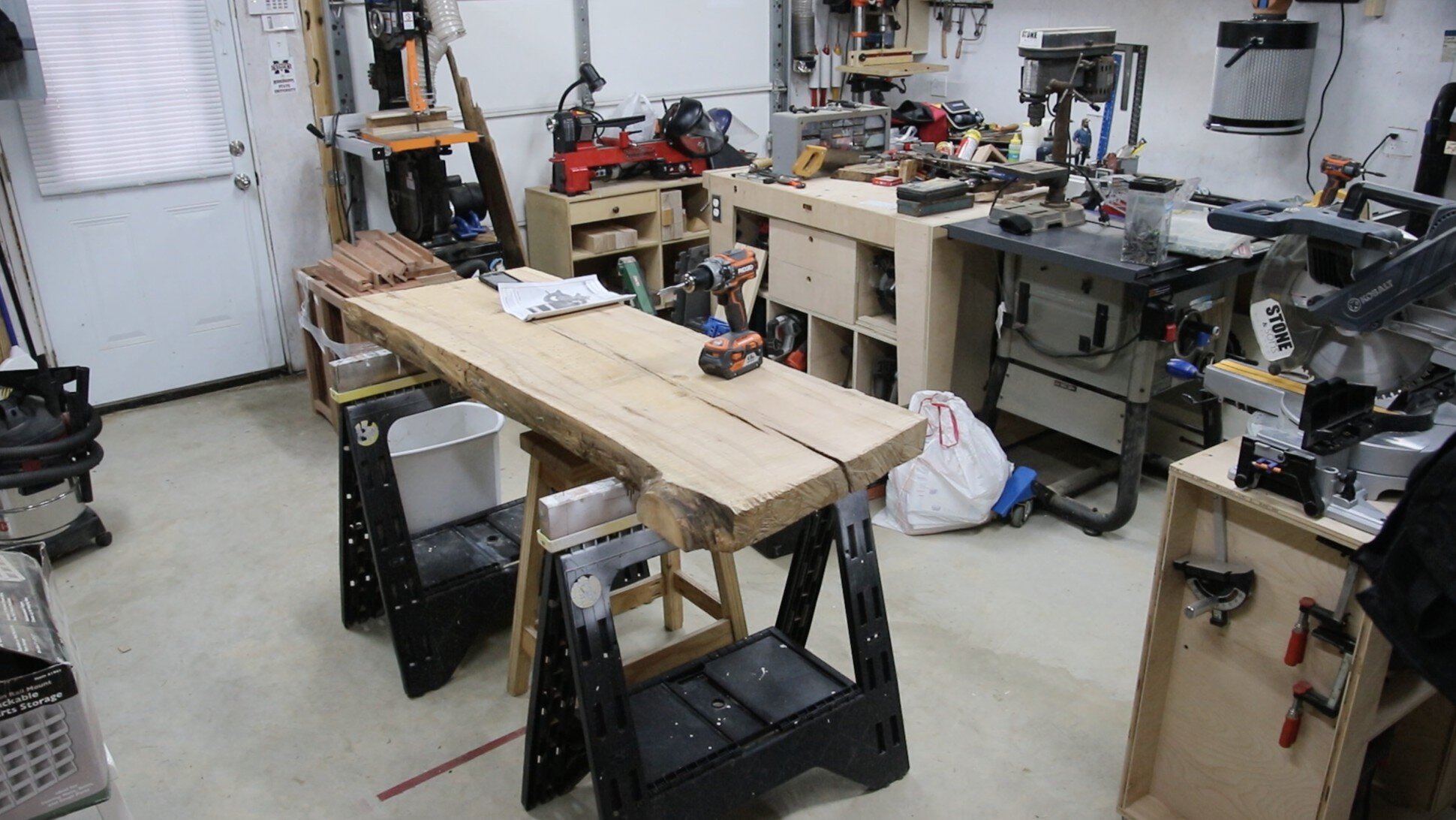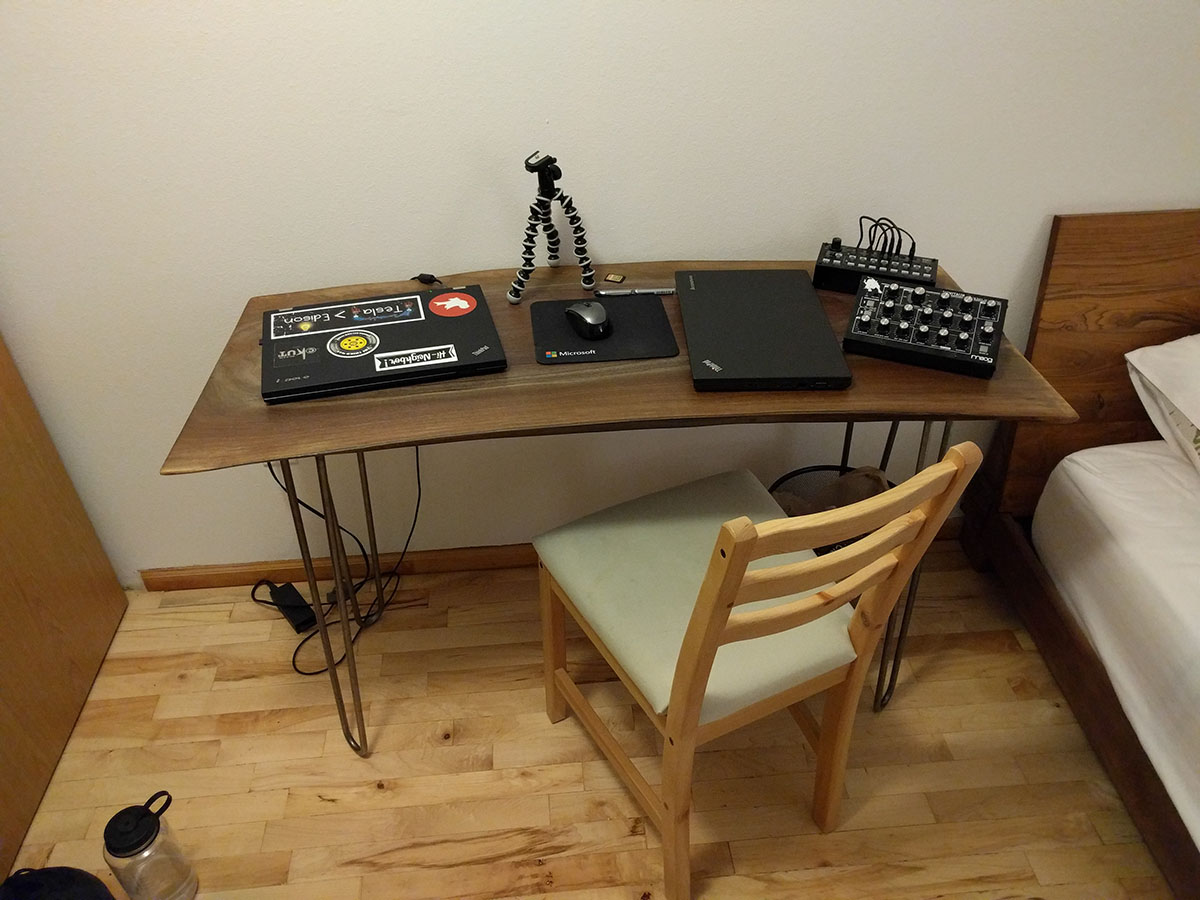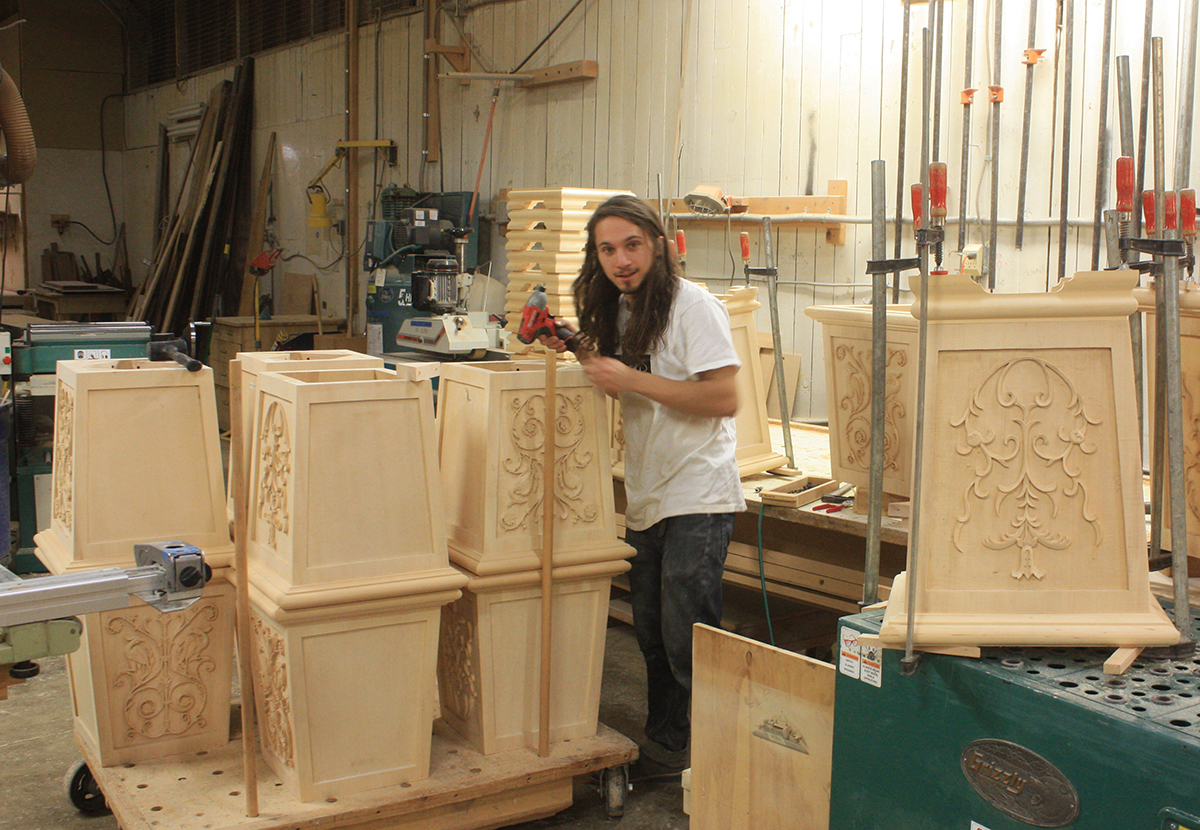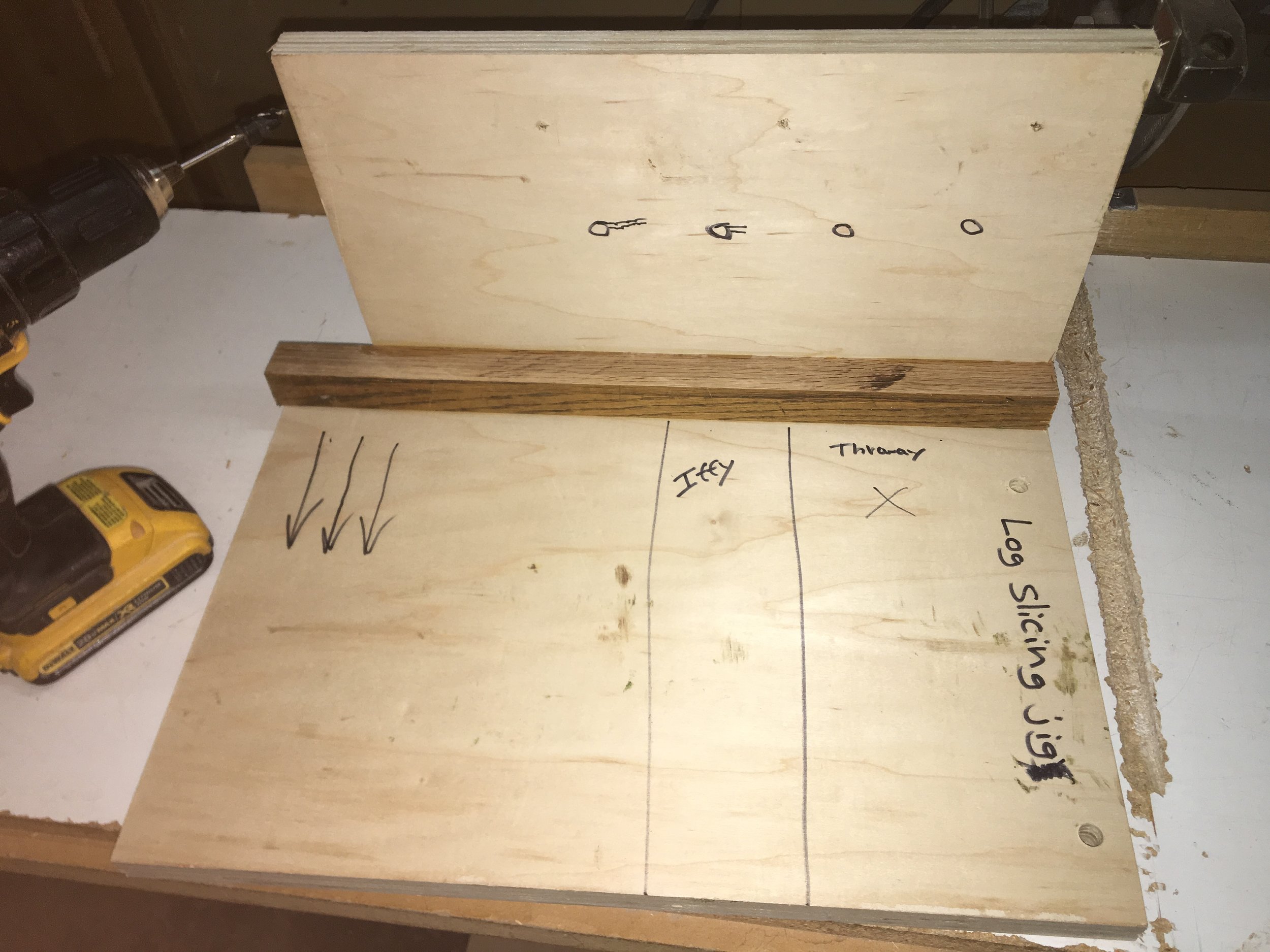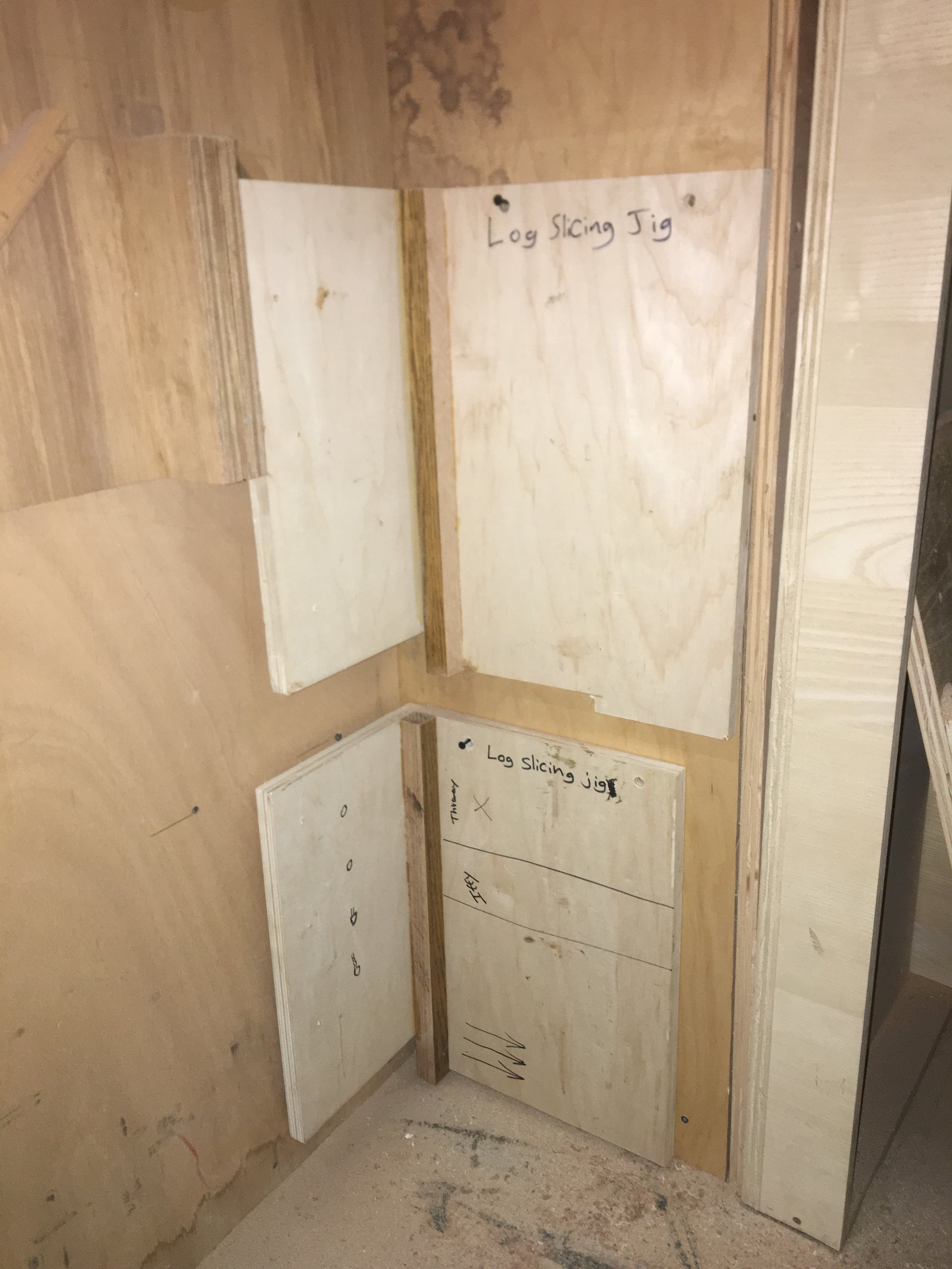If you're looking into the woodworking business, or serious hobby work, there are some workshop tools and equipment that you'll need to own. The following machines are in order of most to least essential, followed by portable power tools. You actually can start with portable tools and do some good work, but this article is about fully equipping a small shop.
Table Saw
The table saw is central to the woodshop. They range in size and cost from very large production machines to small portable versions suitable to carry to a job site. All of them work in basically the same way.
A motor is mounted beneath a steel tabletop that holds a circular saw blade on a spinning shaft extending from the motor called an arbor.. The motor and blade can be tipped to an angle to cut a bevel cut along the length of a board. The machine also is equipped with an attachment called a miter gauge that rides in a slot on the steel top to guide cuts across the board. Lengthwise cutting is called ripping, and cutting the narrow direction is called crosscutting.
Jointer
This tool is used in conjunction with a Thickness Planer. It flattens and smooths the face of boards that are warped or twisted prior to sending them through the Planer to produce a given thickness. The jointer is also used to straighten edges before taking them to the table saw to cut them to a given width.
Thickness Planer
The thickness planer is another very important tool no woodshop should be without. After the lumber is made flat on one face the planer will take it down to the desired final thickness and produce a smooth face.
Like the jointer, the planer has a spinning cylindrical cutter head with straight knives. As the wood is fed into the machine it is picked up by power feed rollers that carry it under the cutter head to produce the desired thickness.
Compound Miter Saw
This tool is designed for crosscutting and can simplify such cuts compared to the table saw. Since the wood is what moves on the table saw, sufficient clearance for making crosscuts can be difficult. The miter saw almost always is set against a wall and the wood simply dropped down and cut.
This is a portable tool but because of how it works, it’s highly recommended you use it with an extended table on the front and back for extra stability. This is not only for the saw, but it’s also for the material being cut. Some pieces can be quite long.
The saw itself is a circular saw mounted on a table with an arm that has a rear pivot. Blades are between 8 and 15 inches in diameter with most jobs needing 10-12 inches. The diameter determines the max-width of the cut. The blade and motor can be tilted to one side together for miter cuts and the blade alone can be titled again allowing for the compound miter cut. A compound miter cut is two different angles being cut at the same time.
Air Compressor
In this day and age where most tools are powered, this has become one of the most important pieces of equipment in any kind of shop but especially the woodshop.
It is usually a round tank full of compressed air with a set of regulators. One regulates the pressure in the tank, and the other regulates the pressure of the air leaving the tank typically via a hose. There’s also a motorized pump and the necessary power switch. Everything is then housed in a metal frame with or without wheels and a handle.
Drill Press
The drill press is akin to a portable drill, except the drill itself is built into an assembly that controls the movement of the drill bit in a constrained vertical direction while the material is placed on a table below the drill bit.
The drill press comes in two models, the free-standing floor model and the portable one you can mount on your workbench. The drill press has a fixed motor and a pulley system to transfer rotation to a vertical shaft. The vertical shaft carries a drill chuck designed to clamp a variety of sizes of drill bits extending out of the bottom end of the shaft.
There is a lever arm that is moved in a circular fashion to lower the shaft and drill bit into the wood. It is spring loaded to allow the shaft to return to the top position when the lever arm is released
Like a hand drill, it has a chuck where you attach either drill or driver bits. Once it’s secured, you use the lever to lower the chuck to the workpiece. Once it’s done, you release the level, and a spring sends the chuck back up again. The table is adjustable to the size of the workpiece.
Band Saw
The “band” of a band saw is the blade which is a long hoop of metal with teeth along one edge. The blade is looped over two wheels one above the saw table and one below the saw table. The wheels are pressed apart to tighten the blade hoop against the wheels and provide considerable tension to the section of the blade that is vertical from one wheel to the other. The body of the band saw is basically a C shape designed to hold the two wheels, the table, and a motor on the lower wheel to drive the blade.
Disk and Belt Sander
This is a two for one combo tool. It has a stationary disc sander set up vertically on one side, and a stationary belt sander set up horizontally on the other side. Between them there is and electric motor and a pair of round drums. One drum runs the motor for both sanders while the second drum keeps tension on the belt sander.
The belt sander uses sandpaper in a wide variety of grit as well as width and length. The disc sander uses discs that come in a large assortment of sizes with the most commonly used sizes being 4-8 inches in diameter.
Circular Saw
This saw is one of the best for a beginner just learning how to cut wood. It can handle rip cuts, bevels, and cross-cutting with ease. This tool can be handheld or mounted to your workbench. Most use it with a pair of sawhorses to hold the wood to be cut. The blade can be adjusted for depth so the user can cut dados, cut-offs, and narrow slits.
The mobility and versatility of being hand controlled help it to be a quick way to make a cut that does not need high accuracy. It is a table saw without the table.
Power Drill
A drill should be owned by everyone, not just woodworkers. It’s very versatile when it comes to fastening screws or boring holes. A handheld drill can be converted into a press drill when you need one. It has a chuck for holding all manner of drill and driver bits, and it can be used anywhere.
Jigsaw
This tool is a hand held power tool designed to make curved cuts. The piece of work is held stationary, usually in clamps. Blades extend out of the bottom of the saw’s foot and reciprocate up and down to make the cuts
Router
This hand tool has a huge selection of bits to fit practically any type of job the customer (or spouse) wants from you. It’s mainly used for hollowing out circular areas on the face of wood, but like the scroll saw, it can also be used for cutting dovetails and dados, adding profiles to crown molding, cutting patterns on the face of wood, and adding decorative edges.
Shop Vacuum
This piece of equipment is a major must-have for cleaning up your woodshop. Made almost completely of plastic, this vacuum doesn’t use a bag. It can be used to pick up everything from nails and screws to oil.
The takeaway
As important as these tools are, the budget required to purchase this equipment is out of the question for most people. This is where renting space and accessing these tools makes all the difference. IsGoodWoodworks offers competitive shop and equipment rental rates along with a variety of training and certification programs.
This is the perfect solution for anyone looking to save money but wants access to premium grade equipment in a large, efficiently designed shop.

